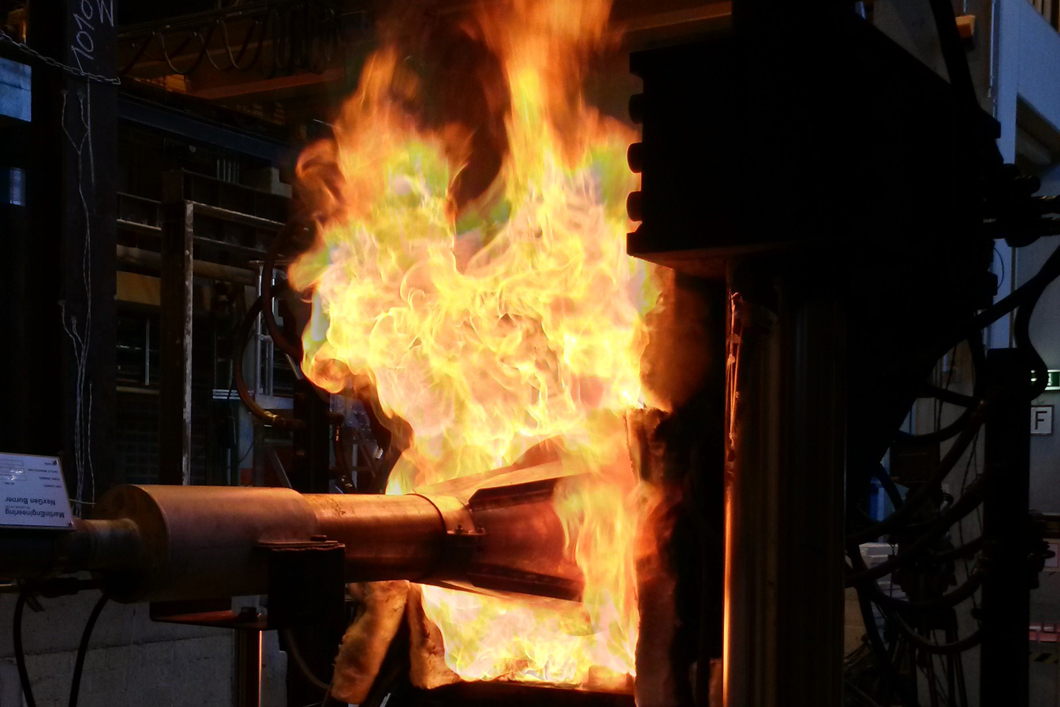
Intermediate-scale CiF fire stability test
Source: BAM, Division Technical Properties of Polymeric Materials
Glass or carbon fibre reinforced polymer composites, GFRP or CFRP, are progressively used as light weight high performance materials in load bearing components. Modern fuselages made of CFRP in civil aviation or superstructure construction systems for passenger ferries and cruise ships are technological milestones demonstrating their current large momentum.
The fire behaviour of FRPs differs in comparison to polymers, e.g. fibres behave often inert with respect to pyrolysis, they change the heat absorption and transfer, or amount and properties of the fire residue. The fire resistance of load-bearing composite components, e.g. sandwich panels or stringer reinforced shells, differs also in comparison to the metal systems replaced. Not burn-through, but the fire stability under compressive loads is the typical critical mode of failure and is controlled by the decomposition and softening of the polymeric matrix. Fire retardancy concepts are needed based on efficient thermal insulation and tailored for composites.
The fire resistance of composites is one of our favorite research topics, tackled by an interdisciplinary approach combining our competences in mechanical and fatigue behaviour of composites, flame retardancy of polymers and fire engineering. We have built up a bench-scale (specimen 150 mm x 150 mm) and unique intermediate test equipment (specimen 500 mm x 500 mm) for investigating the mechanical failure of sandwiches, shells and stringer reinforced shells applying realistic compression loads up to 233 kN and 1 MN, respectively, and a severe direct flame exposure using burners with a heat flux of ~180 kW/m2 at the same time.
The paper of the month December ‘17: "Fire stability of carbon fiber reinforced polymer shells in the intermediate-scale" by S. Timme, V. Trappe, M. Korzen, B. Schartel published in Composites Structures 178, 320-329, 2017 is the most recent one in a row of papers, e.g. A. Hörold et al. in 2013, 2015, and 2017, communicating our findings in this field and the first one presenting results on shells. Different fire retarding configurations of CFRP, using integrated protective layers, were investigated applying compressive force 40% of the ultimate failure load. Whereas the CFRP specimens failed below 30 seconds, using integrated protective layers increased the time to failure by 68 %. Integrated protective layers, with low heat conductivity and high resitance against burn-through are proposed as promising route to increase the fire stability of FRPs.
Fire stability of carbon fiber reinforced polymer shells on the intermediate-scale
Sebastian Timme, Volker Trappe, Manfred Korzen, Bernhard Schartel
Composite Structures, Volume 178, 15 October 2017, Pages 320-329
BAM Department Materials Engineering, Division Mechanics of Polymers, Department Safety of Structures, Division Fire Engineering und Division Technical Properties of Polymeric Materials


